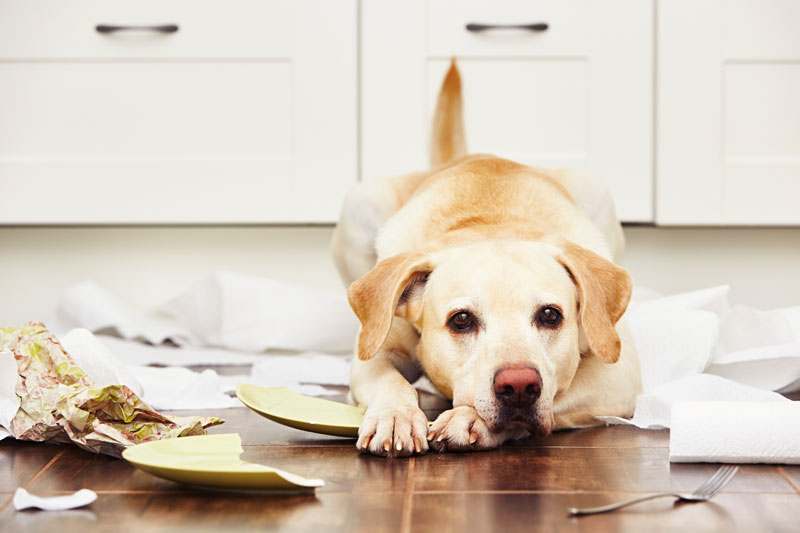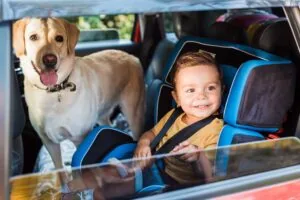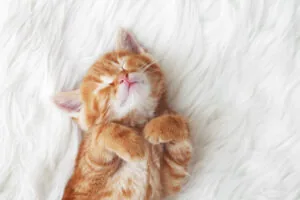Tips to Comfort Pets with Separation Anxiety

Big changes in routine, like the transition from summer break to the school year in the fall, can cause separation anxiety in dogs and cats. Separation anxiety is a common behavior disorder affecting dogs worldwide. Twenty to 40 percent of dogs presented to veterinary behavioral specialists suffer from this disorder. Dogs with separation anxiety often express their emotional distress in destructive, loud, and inconvenient ways. Dogs who suffer from separation anxiety are emotionally distressed and anxious when their person leaves, even if just for a short time. This emotional distress can be taxing on the animal’s wellbeing, which is why it is important to consult your veterinarian on ways to alleviate their anxiety.
Signs of Separation Anxiety in Dogs and Cats
● Destructive behavior
● Excessive drooling
● Excessive barking or whining
● Self-harm
● Inappropriate elimination
● Restlessness when owner departs
● Panting, pacing, licking their lips, cowering
● Reluctance to eat
How to Ease Separation Anxiety in Dogs and Cats
Create a Routine
Family pets benefit from routines just as much as their parents and children. Leaving and returning at the same time every day will help your four-legged family members adjust to the changes they’re experiencing and reduce your dog or cat’s separation anxiety.
Schedule Time for Play and Exercise
Schedule designated play times for your cat or dog each day. You want to reward the good behaviors and discourage bad behaviors. A treat here or there along with verbal praise, can go a long way. Taking your dog for a walk or playing an interactive game with your cat before you leave for the day is another calming strategy. After exercise, pets are usually ready for a nap, which creates the perfect segue for you to leave.
Provide Some Background Noise
People who turn the TV on for their dogs or cats when they leave the house are sometimes considered “crazy pet parents,” but it’s good advice for treating separation anxiety in dogs and cats.
Playing music, leaving the TV on and even turning on an audiobook or podcast can provide them with some engagement and distraction. Plus, the sound of other human voices can make pets feel less alone.
Try Stimulating Puzzles and Games
Puzzle feeders are a great way to reduce anxiety and keep your pet mentally stimulated. Pour half of their recommended daily amount of food into the puzzle feeder each morning and then refill each evening. Your dog or cat will spend the day busy and engaged, which can ease feelings of anxiety.
Other options are to hide small portions of dry cat or dog food and leave them in bowls around the house.
Remain Calm and Confident
You’re the pack leader, so your children and pets will follow your lead. If you prolong goodbyes, you’re more likely to spur those feelings of separation anxiety in your pets. Instead, keep goodbyes short and sweet each time. Your pets (and children) will follow suit. If your pet (or you) struggle with this, try saying goodbye with lots of petting and praise as much as 10 to 20 minutes before you leave. Then, when the time comes to leave, you can go without feeling bad, because you’ve already said goodbye. If you have to leave suddenly and don’t have time for a walk or to create a game for them to play while you’re away, try giving them a favorite toy to keep them stimulated.
By following the above tips, you can ease your cat or dog’s separation anxiety symptoms and make them feel more comfortable being home alone.
Share This Post
Recent Posts
About Shallowford Animal Hospital
Shallowford Animal Hospital and The Pet Spa at Shallowford are dedicated to the exceptional, compassionate care your pet deserves. Pets hold a very special place in our families, and we treat yours like our own.



